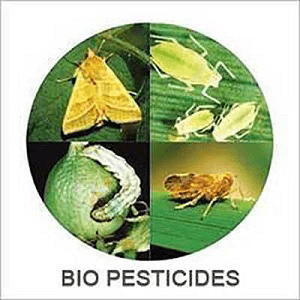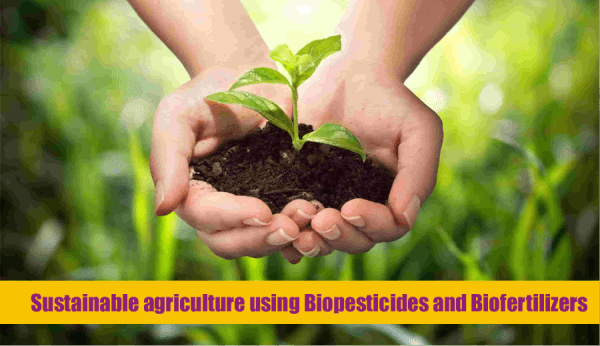Advantages and Disadvantages of BiopesticidesStatus shows that India loses about 30% of its products due to pest disease, which accounts for about 60,000 crores of rupees yearly. The pest problem is a significant loss of flourishing yields and agriculture. Since the use of pesticides in agriculture in crop protection, significant influence has been seen, which is minimal loss of yields. But everything has pros and cons; pesticides on long-term usage cannot assure complete crop protection against pests. This is because high usage of pesticides can result in pain developing resistance against pesticides. Besides this, one significant ill effects of pesticides are food safety hazards. To counter these several disadvantages of pesticides, there is a need to reduce the usage of chemical pesticides. This led to using environmentally friendly pesticides using integrated pest management (IPM). 
IPM refers to a technique that suppresses pests by using two or more methods of pest control simultaneously; also, it tackles these with the least usage of chemical pesticides. These results are attained by more and more use of biocontrol agents present in the environment naturally. These are known as biopesticides. A biopesticide is an organism or biological substance that harms, kills, or deterioration of pests. They are derived from plants, bacteria, and microbes such as fungi, nematodes, etc. The function of biopesticides is not implicated. The chemical compounds which are produced by plants sometimes help in safeguarding from pests known as antifeedants. Biopesticides are biodegradable, renewable, and have economic use. Importance of BiopesticidesBalance of the ecosystem is a vital function to be performed, although the process of the biological control system disrupts this balance. Regeneration and multiplication are the nature of every life form in the lithosphere. The food chain maintains the numbers of each species through a series of predators and parasites. The biological control system also disrupts these interrelations since a major species is targeted and wholly eradicated from the habitat. Also, they are specific in their actions, i.e., they only check and control pests. They are based on natural products and hence are harmless to the environment and don't leave any residues that may cause harm or food safety hazards. Conclusively, biopesticide is a harmless way to check and control pests in various agricultural and economic situations. Most farmers are concerned with establishing a sustainable form of agriculture as a system. The primary requirement for better yields is a 'pests-free field' since biopesticides are eco-friendly and do not harm the soil, water supply, wildlife, and human health. 
Classification of BiopesticidesThey are divided into three classes- 1. Biochemical pesticides naturally control pests using synthetic materials that directly harm the pest. Many substances inhibit mating, For Example, insect pests to trap. It is difficult to find whether the essence committee was established to make such decisions known as EPA. 2. Microbial pesticides include microorganisms such as fungi, bacteria, protozoa, and viruses. Each microbial pests have its specific targets to control. Fungi control certain weeds, whereas other fungi specify insects. Bacillus thuringiensis, or Bt, is a microbial pesticide that kills insects. Some Bt ingredients also control moth larvae that are commonly found in plants. The target insect species are determined by whether the particular Bt produces that protein that can be easily bound to a larval gut causing the insect to starve. Several other types of bio-insecticides and bio-pesticide are:
3. PIPs (Plant- incorporated- Protectants) are substances produced from genetic material that has been added to the plant. For Example- Scientists can manipulate genetic material by taking the gene from the Biopesticide protein and introducing that into plants' genetic material. Then the plant, instead of the Bt, manufactures the substance that destroys the pest. 
Advantages of Biopesticides.
Disadvantages of Biopesticides
Biopesticides Usage in IndiaFor the past 10 years, India has witnessed a tremendous increase in the use of biopesticides as a significant crop protection technique. Mainly as the status shows, production techniques are standardized, like Trichoderma, Gliocladium, Paecilomyces, Pseudomonas, Trichogramma, NPV, and Bacillus are used to counter many insects and pest problems. It's been seen many times that biocontrol agents are used successfully in India. Some examples are as follows:
The usage of biopesticides has been seen on a large scale in India. These biocontrol agents, combined with current technological and systematic research, enhanced the effectiveness of these biopesticides. Also, the increase in usage can also be determined as the techniques from large numbered storage, production, and transportation of these have been broadening. Biopesticides are one of the best natural ways to control pests without harming the soil. |
 For Videos Join Our Youtube Channel: Join Now
For Videos Join Our Youtube Channel: Join Now
Feedback
- Send your Feedback to [email protected]
Help Others, Please Share










